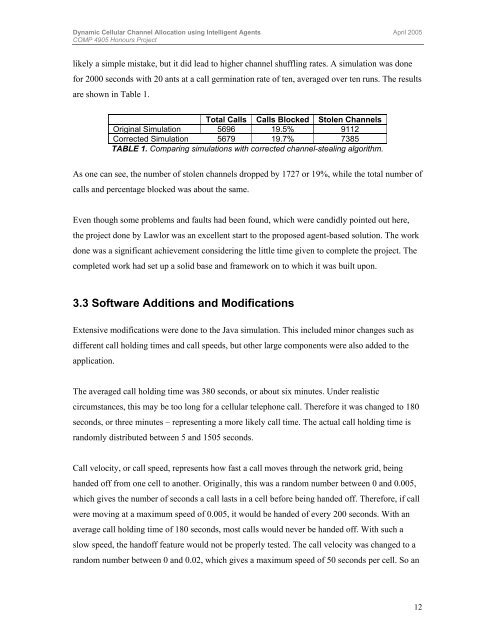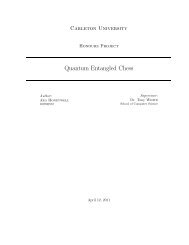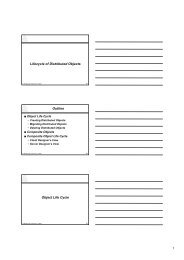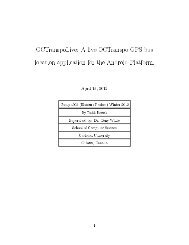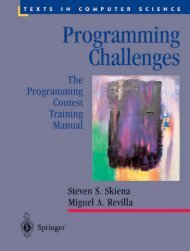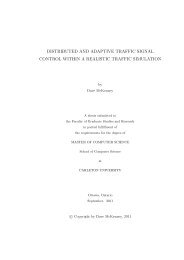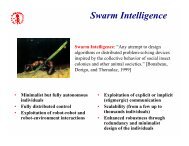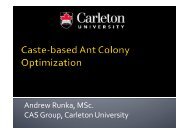Gayan Abeysundara - Complex Adaptive Systems Group
Gayan Abeysundara - Complex Adaptive Systems Group
Gayan Abeysundara - Complex Adaptive Systems Group
You also want an ePaper? Increase the reach of your titles
YUMPU automatically turns print PDFs into web optimized ePapers that Google loves.
Dynamic Cellular Channel Allocation using Intelligent Agents April 2005COMP 4905 Honours Projectlikely a simple mistake, but it did lead to higher channel shuffling rates. A simulation was donefor 2000 seconds with 20 ants at a call germination rate of ten, averaged over ten runs. The resultsare shown in Table 1.Total Calls Calls Blocked Stolen ChannelsOriginal Simulation 5696 19.5% 9112Corrected Simulation 5679 19.7% 7385TABLE 1. Comparing simulations with corrected channel-stealing algorithm.As one can see, the number of stolen channels dropped by 1727 or 19%, while the total number ofcalls and percentage blocked was about the same.Even though some problems and faults had been found, which were candidly pointed out here,the project done by Lawlor was an excellent start to the proposed agent-based solution. The workdone was a significant achievement considering the little time given to complete the project. Thecompleted work had set up a solid base and framework on to which it was built upon.3.3 Software Additions and ModificationsExtensive modifications were done to the Java simulation. This included minor changes such asdifferent call holding times and call speeds, but other large components were also added to theapplication.The averaged call holding time was 380 seconds, or about six minutes. Under realisticcircumstances, this may be too long for a cellular telephone call. Therefore it was changed to 180seconds, or three minutes – representing a more likely call time. The actual call holding time israndomly distributed between 5 and 1505 seconds.Call velocity, or call speed, represents how fast a call moves through the network grid, beinghanded off from one cell to another. Originally, this was a random number between 0 and 0.005,which gives the number of seconds a call lasts in a cell before being handed off. Therefore, if callwere moving at a maximum speed of 0.005, it would be handed of every 200 seconds. With anaverage call holding time of 180 seconds, most calls would never be handed off. With such aslow speed, the handoff feature would not be properly tested. The call velocity was changed to arandom number between 0 and 0.02, which gives a maximum speed of 50 seconds per cell. So an12


